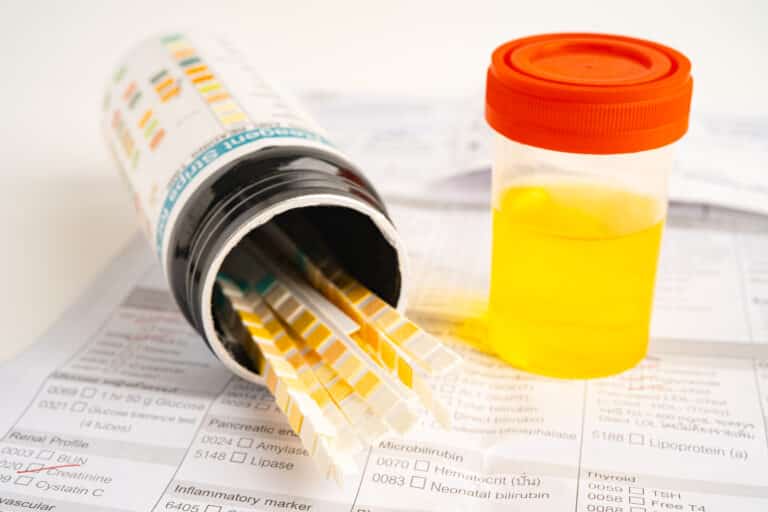Methamphetamine, commonly known as meth, is a powerful stimulant that affects the central nervous system. It is known for its immediate, intense effects and equally intense drawbacks, including the dreaded meth comedown. In this article, we explore what a meth comedown is, the symptoms involved, and how it can be managed effectively. Understanding the physiological and psychological impacts of meth use is crucial for both users and their loved ones. This comprehensive guide offers insights into the challenging aftermath of meth use, aiming to provide valuable information on effective management strategies and support options. By delving into the complexities of meth comedown, we strive to equip readers with the knowledge needed to navigate this challenging phase more effectively.
Understanding Methamphetamine
Methamphetamine is a synthetic drug that stimulates the brain and the central nervous system. It is known for its high potential for addiction and is often used for its ability to increase alertness, concentration, and energy in fatigued individuals. By altering the brain’s chemistry, meth produces heightened levels of dopamine, resulting in temporary pleasure and increased energy.
Short-term Effects
The short-term effects of meth include increased alertness, hyperactivity, decreased appetite, and a sense of euphoria. These enticing effects are fleeting, often leading users into a cycle of continuous use to recapture the initial high, setting the stage for the inevitable and harsh comedown.
Long-term Effects
Chronic meth use can lead to devastating physical and psychological effects, including severe dental problems known as “meth mouth,” skin sores from picking at the skin, heart conditions, and an increased risk of infectious diseases. Additionally, prolonged meth use can cause significant changes in brain structure and function, which may result in long-term cognitive deficits and altered emotional responses. This complex profile underscores the critical need for comprehensive understanding and targeted interventions to combat the meth epidemic effectively.
What is a Meth Comedown?
A meth comedown refers to the period after meth effects wear off, where the user experiences extreme fatigue, depression, and irritability. This phase can be painful both physically and emotionally. It marks a drastic shift from high energy levels to a state where individuals may struggle to cope with the sudden depletion of their body’s resources. This intense comedown can often prompt individuals to use the drug again in an attempt to alleviate the discomfort, thereby increasing the risk of developing a dependency. Recognizing and addressing these symptoms promptly can be crucial in preventing the cycle of abuse and facilitating a path toward recovery.
Physical Symptoms of Meth Comedown
A meth comedown involves several physical symptoms that can be severe and affect a person’s overall well-being. These symptoms are primarily due to the body’s reaction to the absence of the drug after intense stimulation.
Exhaustion
After the intense energy burst, the body crashes, leading to profound fatigue and a need for extended sleep. This exhaustion is not just a typical tiredness but a deep, overwhelming drain that can hinder a person, making even simple tasks seem daunting.
Increased Appetite
During a comedown, individuals often experience a significant increase in appetite, known as “rebound eating,” as the body attempts to recover from being deprived of nutrients. This sudden hunger can lead to rapid overeating, as the body craves more calories to heal and regain energy.
Dehydration
Meth can cause severe dehydration, making it crucial for individuals to rehydrate during a comedown to avoid further complications. The drug’s diuretic effects exacerbate fluid loss, increasing the risk of dehydration, which can further complicate the recovery process by affecting metabolic functions and cognitive abilities. Ensuring adequate fluid intake is essential for those experiencing a comedown to help mitigate these effects and support overall recovery.
Psychological Symptoms of Meth Comedown
The psychological symptoms of a meth comedown are just as challenging as the physical ones and can have profound impacts on mental health. These symptoms stem from the brain’s chemical imbalances caused by prolonged drug use, affecting emotions, thought processes, and behaviors.
Depression
The sudden drop in dopamine levels after meth use can result in severe depression during a comedown. This drastic decrease in feel-good neurotransmitters leaves individuals feeling empty, hopeless, and devoid of pleasure, often leading to a profound emotional low that can be difficult to manage without professional help.
Anxiety
Anxiety and panic attacks are expected as the effects of the drug wear off, leaving the user feeling vulnerable and unsettled. This anxiety is not just a general unease. Still, it can escalate into full-blown panic attacks, making individuals feel a loss of control and extreme fear, even in the absence of actual threats.
Paranoia
In some cases, individuals may experience paranoia or hallucinations, which can be distressing and frightening. These symptoms reflect severe psychological distress and can lead to irrational thoughts and fears, further isolating the individual and complicating their social interactions and personal safety. Addressing these psychological symptoms is crucial in the recovery process, as they can persist long after the physical symptoms have subsided, requiring ongoing mental health support and intervention.
Duration of Meth Comedown
The duration of a meth comedown can vary depending on the amount of drug used, the length of use, and individual health factors. Generally, it can last from a few days to a week. The variability in duration highlights the importance of personalized treatment plans tailored to the specific needs of each individual. Longer and more intense periods of use often result in longer recovery times, underscoring the need for comprehensive medical and psychological support during this challenging phase. Early intervention and consistent care can significantly improve recovery, helping individuals regain stability and reduce the risk of relapse.
The Science Behind Meth Comedown
Methamphetamine causes a massive release of dopamine, a neurotransmitter associated with pleasure and reward. After the drug wears off, the brain struggles to regain balance, leading to the symptoms of a comedown. This disruption to the brain’s chemical equilibrium can profoundly affect mood and behavior, making recovery a complex and challenging process. As the brain attempts to normalize its dopamine levels, users may experience severe emotional and physical withdrawal symptoms that require professional intervention to manage safely and effectively. Understanding this cycle is crucial for developing effective treatment strategies for those affected by meth addiction.
Managing Symptoms of Meth Comedown
Effectively managing the symptoms of a meth comedown can significantly ease the discomfort and hasten recovery. While some symptoms can be managed at home, it is crucial to recognize when professional help is necessary to ensure safety and proper care.
Home Remedies
Simple home remedies like staying hydrated, eating nutritious food, and getting plenty of rest can help alleviate the symptoms. These basic self-care measures support the body’s natural recovery processes. Hydration helps to flush out toxins, nutritious food replenishes depleted resources, and rest allows the body and mind to heal. Additionally, engaging in mild physical activities and using relaxation techniques such as deep breathing or meditation can help manage stress and anxiety during a comedown.
When to Seek Medical Help
If symptoms become unbearable or if depression or thoughts of self-harm occur, it’s crucial to seek professional medical help immediately. Professional intervention is necessary when home remedies are insufficient to manage the symptoms effectively. Medical professionals can offer medications to ease discomfort, provide therapy for emotional distress, and recommend supportive services to assist in recovery. Early and proactive medical care can prevent complications and improve long-term outcomes for individuals struggling with a meth comedown. Recognizing the signs that require professional help is critical in safeguarding one’s health and well-being during the recovery phase.
Treatment Options for Meth Comedown
Navigating the challenges of a meth comedown requires a multi-faceted approach, encompassing detoxification, therapy, and sometimes medication. These treatment options are designed to address both the acute symptoms of comedown and the underlying issues contributing to methamphetamine abuse.
Detoxification
Professional detox programs can provide the support and medical care needed during the intense initial withdrawal and comedown phases. These programs are crucial as they offer a safe environment where symptoms can be medically managed. Detoxification is often the first step in recovery, helping individuals clear the drug from their bodies and stabilize physically under the supervision of healthcare professionals.
Therapy Options
Behavioral therapies can be effective in helping individuals understand their addiction and learn coping strategies. These therapies, including cognitive-behavioral therapy (CBT) and motivational interviewing, are designed to help modify the patient’s thinking and behaviors related to drug use. Therapy can also address co-occurring disorders such as depression and anxiety, which are often catalysts for substance abuse.
Medication
In some cases, medication may be prescribed to help manage the symptoms of withdrawal and to treat the underlying issues related to meth abuse. Medications can be used to alleviate cravings, stabilize mood, and treat any co-occurring mental health disorders. The use of medication must be carefully monitored by a healthcare provider and is typically part of a comprehensive treatment plan that includes psychological support and behavioral modification strategies.
Together, these treatment options form a comprehensive approach to recovery, aiming to restore physical health, address psychological issues, and equip individuals with the tools they need for long-term sobriety and improved quality of life.
How to Help Someone Experiencing a Comedown
It’s important to approach someone experiencing a comedown with empathy and to encourage them to seek professional help. Offering a supportive presence can make a significant difference. Demonstrating understanding and patience can help alleviate the individual’s sense of isolation and despair during this challenging time. Additionally, guiding them towards professional treatment options can accelerate their recovery process and prevent potential relapses. Encouraging open dialogue about their experiences and feelings can foster a trusting relationship that facilitates healing and rehabilitation.
Get Meth Treatment For You or A Loved One Today
A meth comedown is a profoundly challenging and painful experience that significantly impacts both the body and the mind. Understanding the symptoms associated with a meth comedown and recognizing when and how to seek professional assistance are vital steps towards managing this difficult period effectively and ensuring a path to recovery. If you or someone you know is battling with the effects of methamphetamine use, it is crucial to reach out for professional help. The Southern California Sunrise Recovery Center offers expert support and care tailored to help individuals overcome addiction and rebuild their lives. Do not hesitate to contact us today; taking this step could be pivotal in turning a life around. For more information and resources, visit our website or call our helpline to start the journey toward recovery now.






